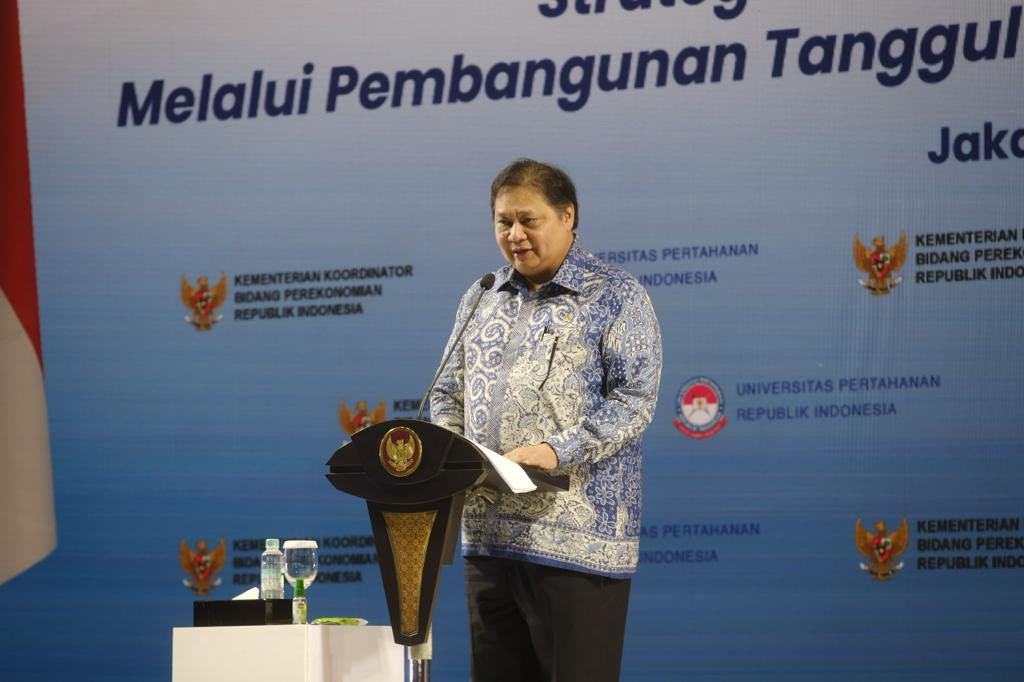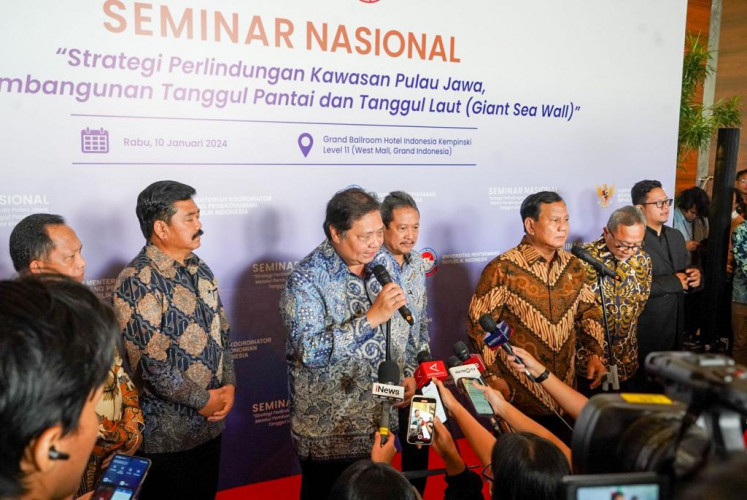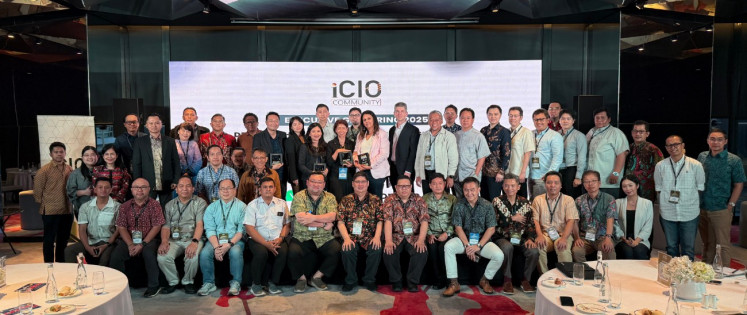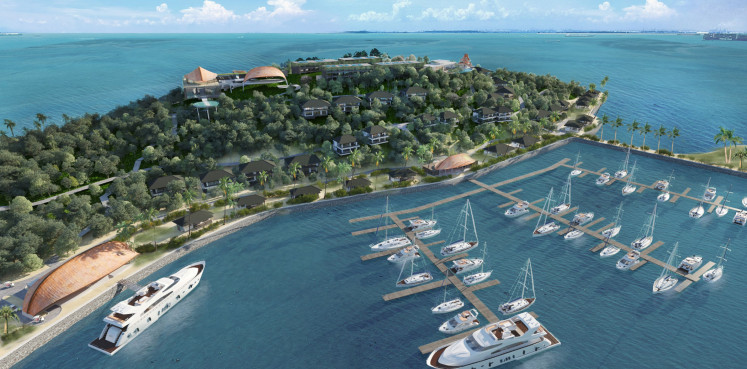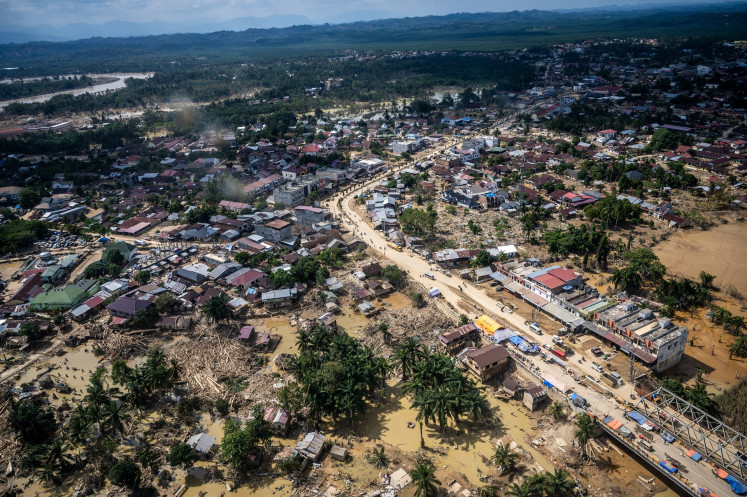Popular Reads
Top Results
Can't find what you're looking for?
View all search resultsPopular Reads
Top Results
Can't find what you're looking for?
View all search resultsAirlangga highlights importance of GWS to protect Java’s northern coastline
Change text size
Gift Premium Articles
to Anyone
I
ncluding national growth in the last third quarter of 2023, spatially, Indonesia’s regions have experienced positive growth and have showcased resilience.
Java was one of the biggest contributors to national gross domestic product (GDP) with a 57.12 percent share. The figure highlighted Java as one of the major economic engines in the country.
With its competitive edge, Java faces a number of challenges, such as the threat of erosion threat, abrasion, floods and land subsidence along Java’s northern Pantura coastline. Along the northern coastline, land is decreasing between 1 and 25 centimeters per annum, and sea surfaces rising between 1 and 15 cm per year in several locations.
“A study by JICA [Japan International Cooperation Agency] has found that growth in the Pantura area accounted for 20 percent of Indonesia’s GDP with industry, fishery, transportation and tourism activities. Pantura is home to 50 million people and this population of 50 million will be potentially affected [by land loss]. So, this will not only endanger the economic and infrastructure sustainability but also the survival of the community,” said Coordinating Economic Minister Airlangga Hartarto when delivering the opening speech at the National Seminar: Strategy for Java Island’s Protection Through the Construction of Giant Sea Wall (GWS) in Jakarta on Jan. 10.
The number of looming threats for Java’s northern coast will affect the sustainability of economic activities and increase the disaster potential for millions of people residing in the area. The degradation-related threats, if left unhandled, are predicted to threaten the existence of 70 industrial parks, five special economic zones (SEZs), 28 Industry-Designated Estates, five Industry Growth Center Areas and various national logistic infrastructure sites, such as airports, railway lines and seaports.
“With this seminar, it is hoped that the program can kick off so we can expand the scale and make this program transformative in nature,” Airlangga said.
Meanwhile, Defense Minister Prabowo Subianto said in his keynote address that the construction of the GWS could be an answer to the rising sea surface and soil loss, and, at the same time, could be a solution for the poor quality of life that some Indonesians still faced.
Prabowo expressed his gratitude for the ongoing study on the construction of the GWS and said the Defense University was tasked to conduct further studies on various aspects that related to the overarching idea of the construction of the GWS.
“I want this [GWS] to be the topic of discussion, the topic of discussion in academic circles, for business people, technocrats and Indonesia’s engineers, and I ask them to conduct in-dept studies on the issue,” Defense Minister Prabowo said.
Prabowo also shared his appreciation for Coordinating Economic Minister along with his ranks and those involved in organizing the national seminar.
Attending the seminar were House of Representatives members, Trade Minister Zulkifli Hasan, Home Minister Tito Karnavian, Agrarian Reform and Spatial Planning Minister Hadi Tjahjanto, Maritime Affairs and Fisheries Minister Sakti Wahyu Trenggono, Defense University Rector Lt. Gen. Jonni Mahroza, National Research and Innovation Agency (BRIN) researcher Dwi Sarah, Witteveen Bos Indonesia Victor Coenen, Coordinating Economic Ministry Assistant Raden Pardede, Coordinating Economic Ministry secretary Susiwijono Moegiarso, Coordinating Economic Ministry speaker Haryo Limanseto, acting Banten governor Al Muktabar and a number of the government officials from echelon 1 and 2 as well as regional heads from along Java’s northern coast.

